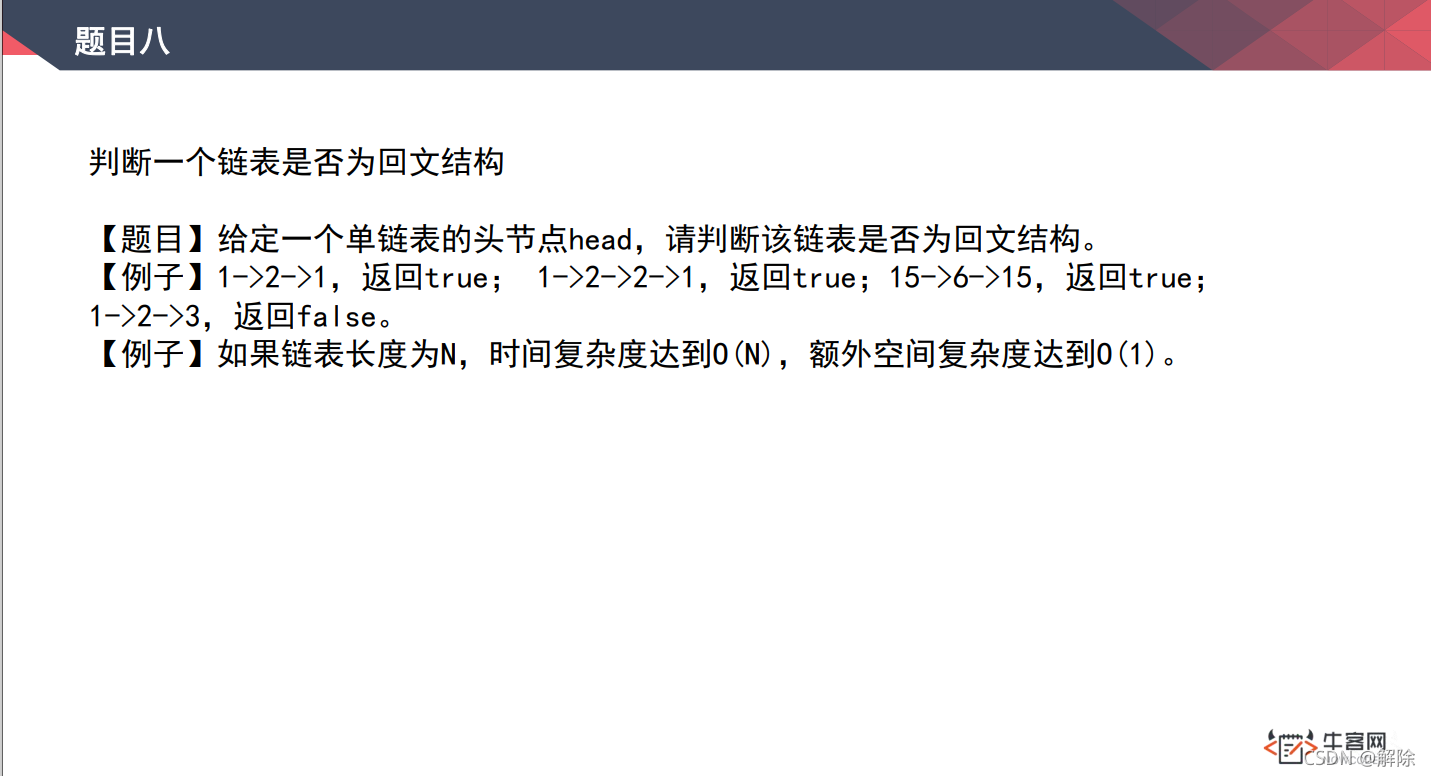方法一:全部丢到栈中,然后依次取出与链表中的值比较。需要N个额外空间。
方法二:利用快慢指针,找出链表中点位置,将链表后半部分依次压栈,再取出与链表的值比较。需要额外N/2个额外空间。
方法三:利用快慢指针,找出链表中点位置,将链表后半部分翻转,依次比较两链表值,判断是否是回文结构后将翻转的链表还原。

package class04P;
import java.util.Stack;
public class Code04P_IsPalindromeList {
public static class Node{
public int val;
public Node next;
public Node(int val){
this.val = val;
}
}
public static boolean IsPalindromeList1(Node head){//head = null时,认为是回文结构
Stack<Node> stack = new Stack<>();
Node cur = head;
while(cur != null){
stack.push(cur);
cur = cur.next;
}
while(head != null){
if(stack.pop().val != head.val) return false;
head = head.next;
}
return true;
}
public static boolean IsPalindromeList2(Node head){
if(head == null || head.next == null) return true;
Node fast = head, slow = head;
while(fast.next != null && fast.next.next != null){
fast = fast.next.next;
slow = slow.next;
}
slow = slow.next;
Stack<Node> stack = new Stack<>();
while (slow != null){
stack.push(slow);
slow = slow.next;
}
while(!stack.isEmpty()){
if(stack.pop().val != head.val) return false;
head = head.next;
}
return true;
}
public static boolean IsPalindromeList3(Node head){
if(head == null || head.next == null) return true;//这里必须要有head.next == null的判断,不然后面单链表的翻转会出现空指针异常
Node fast = head, slow = head;
while (fast.next != null && fast.next.next != null){
slow = slow.next;
fast = fast.next.next;
}
Node tmpHead = slow.next;
slow.next = null;
Node pre = slow;
while (tmpHead != null){
Node tmpNext = tmpHead.next;
tmpHead.next = pre;
pre = tmpHead;
tmpHead = tmpNext;
}
tmpHead = pre;
slow = head;//这里slow = head只是少申请一个Node
Boolean res = true;
while(slow != null){
if (slow.val != tmpHead.val){
res = false;
break;
}
slow= slow.next;
tmpHead = tmpHead.next;
}
tmpHead = null;//要是再定义几个Node的话,表述会更加清楚
while (pre != null) {
Node tmpNext = pre.next;
pre.next = tmpHead;
tmpHead = pre;
pre = tmpNext;
}
return res;
}
public static void main(String[] args) {
Node node1 = new Node(2);
node1.next = new Node(3);
node1.next.next = new Node(8);
node1.next.next.next = new Node(3);
node1.next.next.next.next = new Node(2);
System.out.println(IsPalindromeList3(node1));
}
}